Veteran remembers his fallen comrades at D-Day, and wonders why he made it out alive
‘Sometimes I think: why were they killed and I wasn’t? Why? You don’t know,’ Arden C Earll tells Michael E Ruane
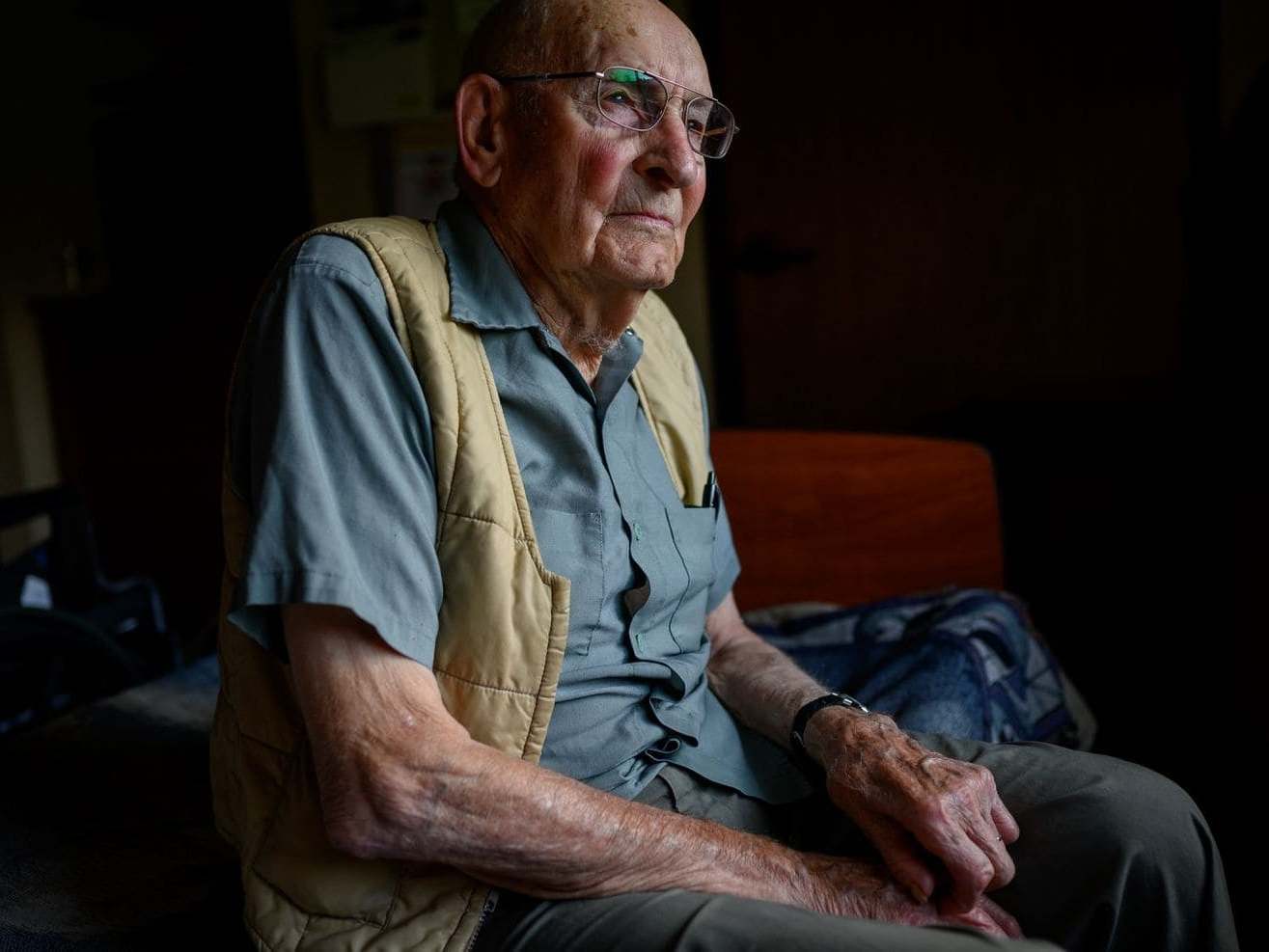
Arden C Earll sits in his wheelchair in the library of the nursing home where he lives and studies the list of men from Company H who were killed on Omaha Beach.
“Cowan,” he recites, as if calling the roll.
“Crawley.
“Hayes.”
He begins to cry as he reads the names he recognises.
“Washburn” – Noel P, his 21-year-old squad leader, cut down in front of him as they came off the landing craft on D-Day.
“McGrath” – Donald E, a fellow Pennsylvanian, age 22, whose father was a telegraph operator back in Carbondale.
Eighteen men from his company perished on 6 June 1944.
Earll, 94, sighs and wipes away his tears.
“Sometimes I think, ‘Why were they killed and I wasn’t?’ Why? You don’t know.”
On the 75th anniversary of the legendary Second World War allied invasion at Normandy, few American veterans of the landings are left to tell the story.
Of the 16 million who served, fewer than 500,000 American veterans of the war are believed to be alive. “D-Day vets would be a small subset of that number,” says John Long of the National D-Day Memorial.
The landings were a turning point in the Second World War. Along with the massive armies of the Soviet Union in Eastern Europe, they created the vice that would crush Nazi Germany and end the war in Europe within a year.
A solemn commemoration is taking place on 6 June in Normandy. President Donald Trump and first lady Melania Trump are attending, along with other world leaders, dignitaries and veterans.
Earll, a dairy farmer’s son from northwestern Pennsylvania, was 19 when the ramp on his landing craft went down and he splashed ashore at 7am with men from the 29th Division’s 116th Regiment.
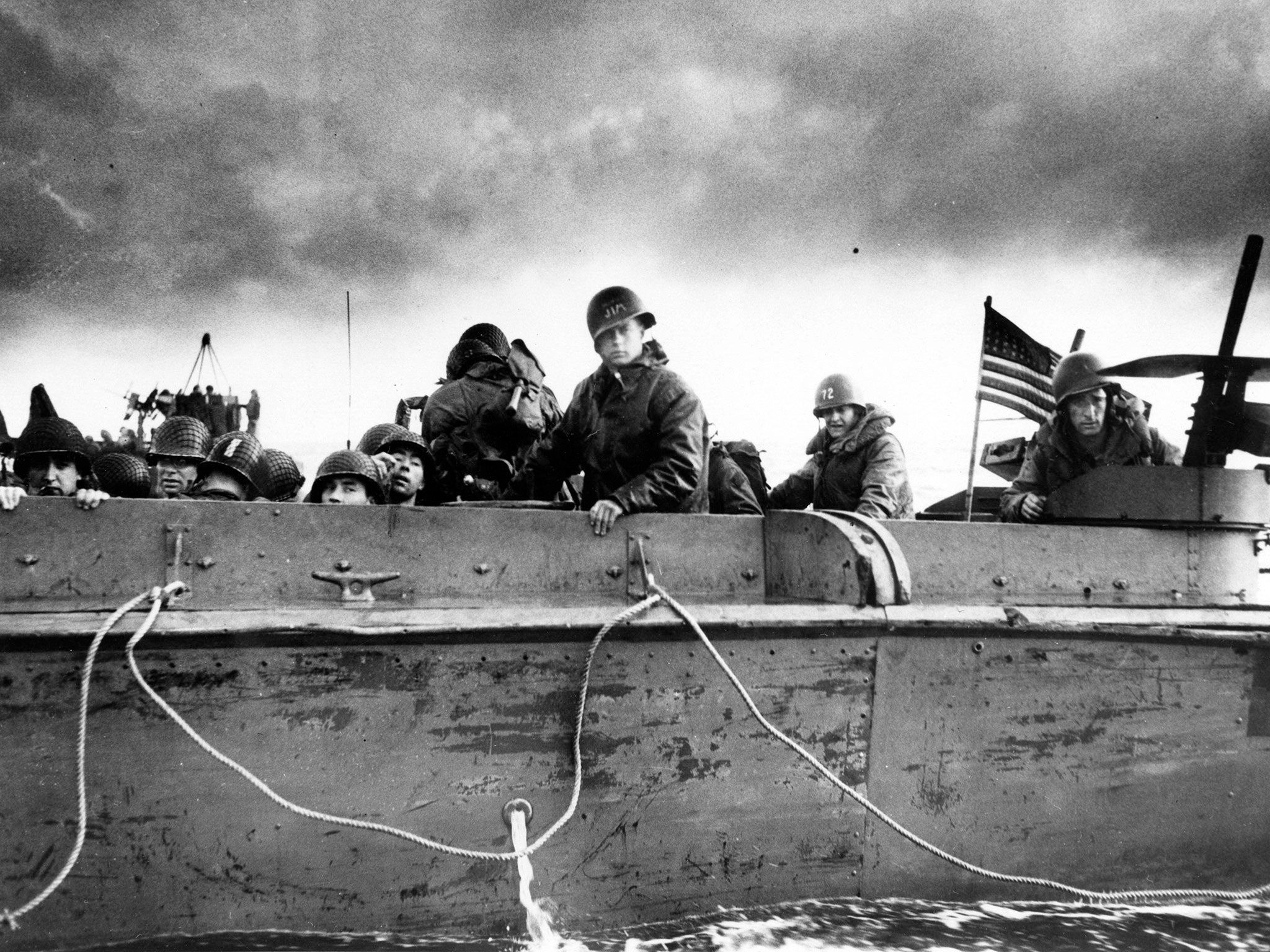
He still has bits of enemy shrapnel under the wrinkled skin of his right arm. “Souvenirs,” he says. And the day remains vividly etched in his mind.
The 18 men from Company H were among 2,501 Americans killed that day – 381 just from the 116th – along with 1,913 British, Canadian and other allied soldiers and sailors, according to the D-Day Memorial in Bedford, Virginia.
They were part of an allied force of more than 150,000 men, 6,000 ships and 10,000 planes that assaulted the coast of France that June.
It was the greatest invasion armada in history, experts say, and its start, D-Day, occupies a place in the American psyche beside the Valley Forge, Gettysburg and Pearl Harbour.
It was the beginning of what American General Dwight D Eisenhower, who was the invasion’s supreme commander, called “the Great Crusade” to liberate western Europe after four years of Nazi domination.
For the Germans, it would be what the defeated Field Marshal Erwin Rommel called “the longest day”.
The grand assault, named Operation Overlord, began on the coast of Normandy. Five beachheads were designated from west to east: Utah and Omaha for the Americans and Gold, Juno and Sword for the British, Canadians and others.
As it turned out, Omaha Beach was the most heavily defended by the Germans and the bloodiest for the Americans. There were 85 enemy machine gun nests, 35 rocket launching sites, 18 antitank guns, four artillery batteries and 35 pillboxes, historian Cornelius Ryan wrote.
Near the end of the day, another “dogface” from the 116th, quoted by historian Alex Kershaw, says of Omaha Beach: “Thousands of bodies were lying there. You could walk on the bodies, as far as you could see ... without touching the ground.”
Arden Earll had placed himself at the front of his landing craft that morning as it plunged through the stormy channel towards the beach, drenching him in seawater.
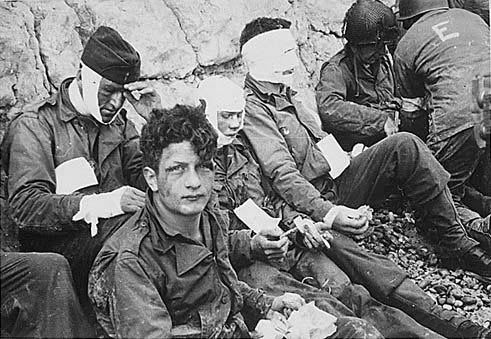
He was desperately trying to keep himself awake after downing too many seasickness pills. He had never before taken the pills, which were issued by the army during amphibious drills but could make you drowsy.
“By God, I’m tough,” he said to himself. “I come from a farm. I don’t need any of your d– pills.”
By God, I’m tough. I come from a farm. I don’t need any of your d– pills
But in the landing craft that morning, when the pills were passed around, he had second thoughts.
“When we get on dry land again, they’re going to be shooting at me,” he reasoned. “I better be damn sure that I’m not sick.”
When the bottle came around, he took a handful instead of the recommended two or three.
“As you know, D-Day was what they call the longest day,” he says. “Well, on the longest day, I’m going to sleep.”
He placed himself up front hoping the splashing water would rouse him. “By the time I got very close to land, I was wide-awake again. But I was soaked to the skin.”
Earll had the blue and grey logo of the 29th Division marked on his helmet. He was carrying his full combat kit plus six rounds of 81mm mortar ammo, wrapped in a life preserver so he could float it ashore, and an old 1903 Springfield rifle.
The new .30-calibre carbines he says he and his buddies had been promised never materialised, so they were issued weapons dating from the First World War. “We took those Springfields and we cleaned them all up .... and that’s what we took in on D-Day,” he says.
Barely a year had passed since the troop train from Erie had picked him up in Union City, where he was born, as it wound through Pennsylvania stopping at small-town stations to collect new GIs headed for the war, Earll says.
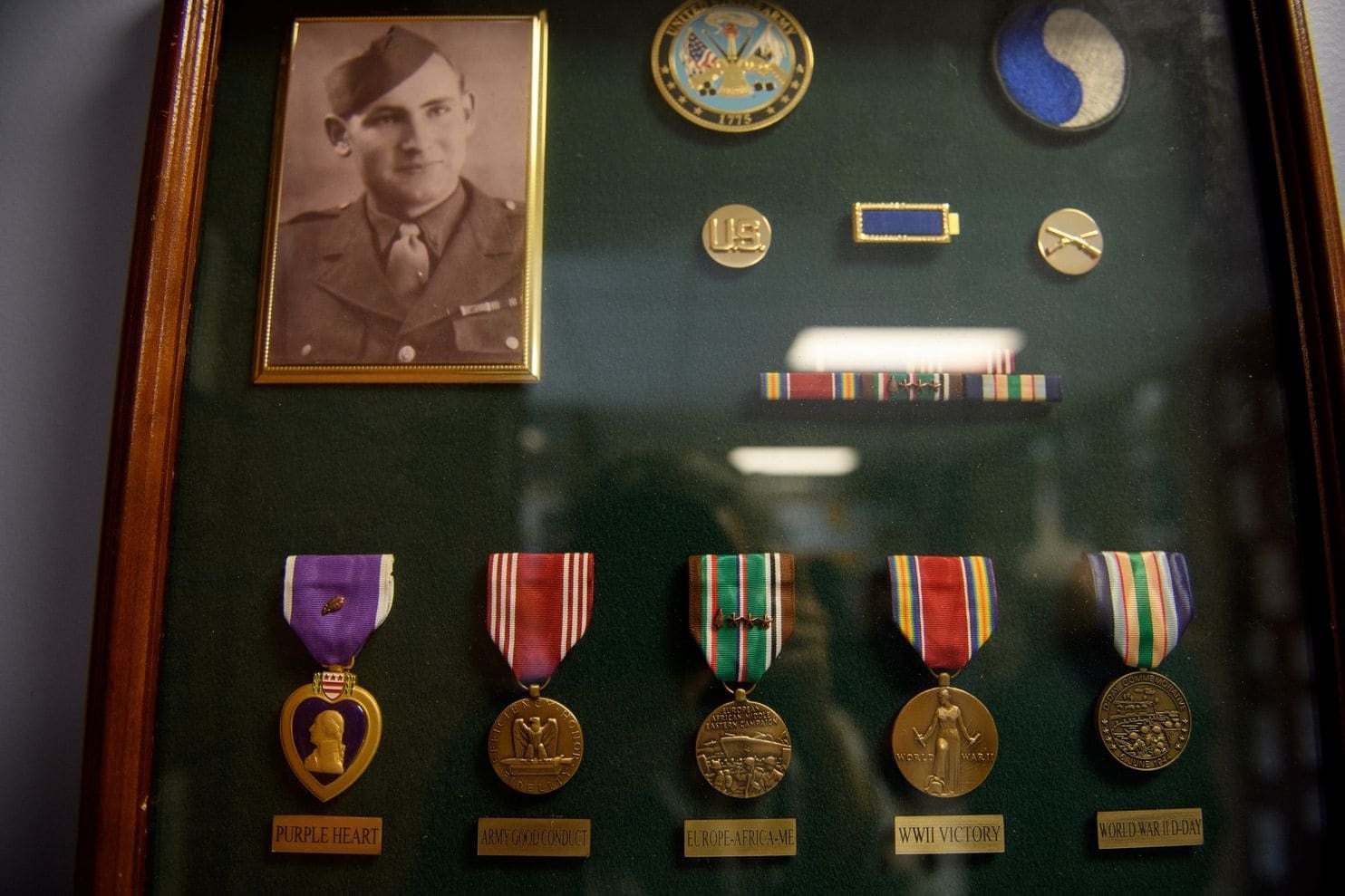
He speaks as he sits at a table wearing glasses, a tan vest and a short-sleeved grey shirt. His hearing is poor, but his recollections are detailed and sharp.
A wartime photo of him in the American Legion post down the road in Union City shows a handsome man in uniform wearing his army overseas cap at a jaunty angle.
Earll was the youngest of four children: three boys and a girl. His father had a farm and worked in one of the local factories. Neither job generated much money, he says. (Earll would return to the area after the war and work for the Postal Service for 40 years.)
He had been drafted upon graduation from Union City High School in 1943. By 14 December of that year, he was heading across the Atlantic aboard the fast ocean liner/troopship Queen Elizabeth.
Six days later he was in Scotland. By June 1944, he had been assigned to Company H in southern England to await the invasion.
Before the men embarked for France from Weymouth, the army dug a large burn pit and ordered the GIs to discard any nonessential items, Earll told the Library of Congress Veterans History Project in 2007.
Cartons of cigarettes went in, along with personal items and other things. “I remember one man had a guitar,” he says. “When we were in camp he sat around evenings playing his guitar. The last I saw of that guitar it was down there in that hole... burning up.”
When we were in camp he sat around evenings playing his guitar. The last I saw of that guitar it was down there in that hole... burning up
He and his comrades started the crossing aboard a large transport ship, the USS Thomas Jefferson, where members of the clergy held services below deck and Eisenhower’s famous D-Day message was read: “Soldiers, sailors, and airmen of the Allied Expeditionary Force: you are about to embark upon the Great Crusade, towards which we have striven these many months. The eyes of the world are upon you. The hopes and prayers of liberty-loving people everywhere march with you.”
By 7am, Earll and his Company H pals had been jammed into the small landing craft for about three hours as it ploughed towards Normandy.
Now they were near the beach. Somebody said, “There’s France,” but when Earll took a look all he could see was smoke.
Company A had gone in about 30 minutes earlier and was being decimated by German fire. One hundred and three men from Company A would be killed – including 22 from the small town of Bedford, about 130 miles west of Richmond.
The 3,400 men of the 116th were assaulting a three-mile stretch of Omaha Beach that was separated by several “draws”, or pathways, leading inland from the water. Earll said his outfit’s target was the draw at a place called Les Moulins, near a sub-sector of the beach called Dog Red.
Les Moulins was defended by two German strong points with concrete bunkers, a 50mm cannon, machine guns, mortars and revolving tank turrets, according to historian Peter Caddick-Adams.
When the ramp of Earll’s landing craft went down, the water was knee-deep.
“Let’s go!” Washburn said.
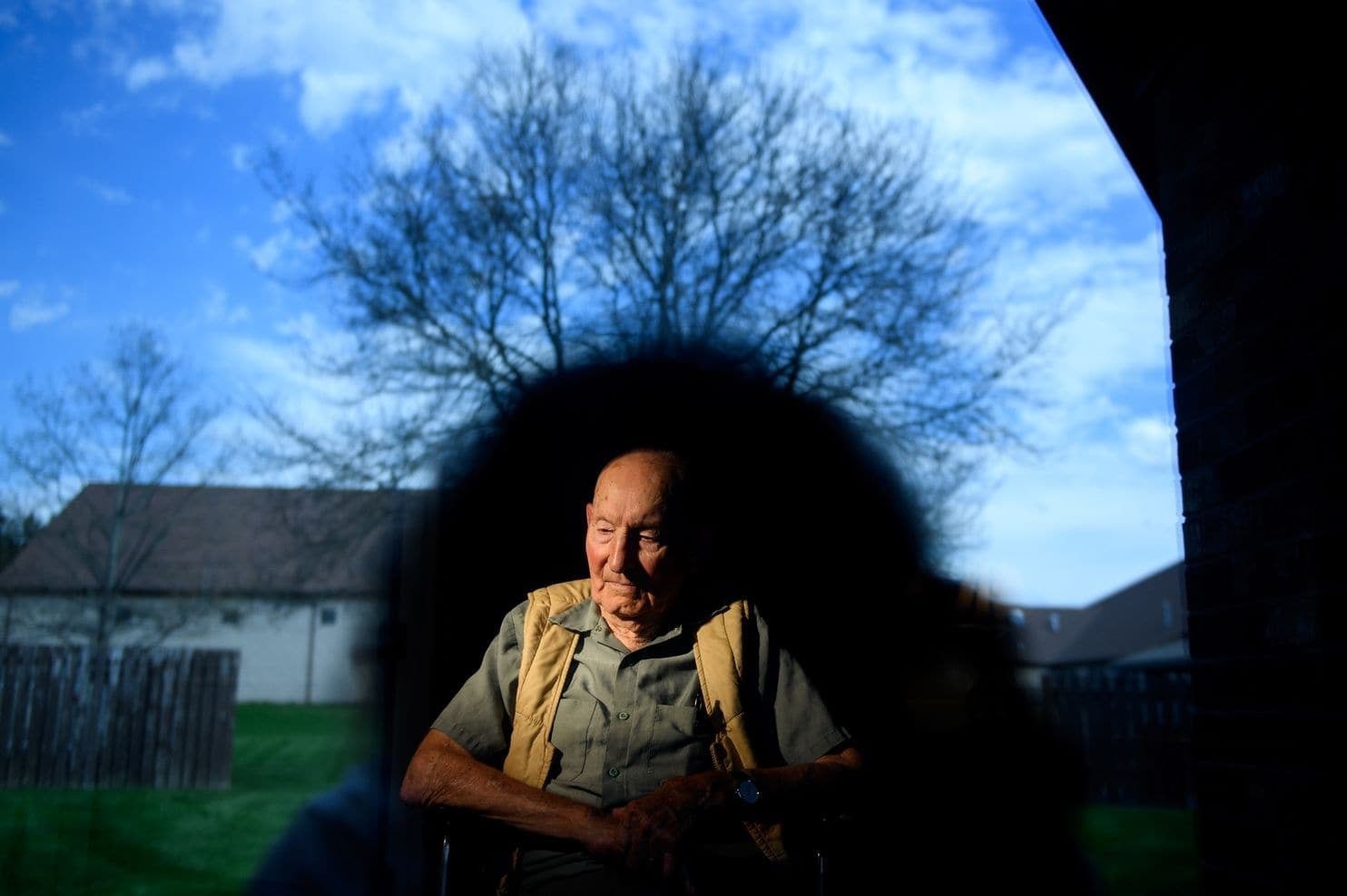
He was the first one out. “I was right behind him,” Earll says.
They got about 20 or 25 yards when Washburn went down.
“I saw him go into the water,” Earll says. “When he got up, I could see that he was hurt bad. Something had hit him all up and down the front of him. He went back down into the water and never got up.”
Washburn was the son of a carpenter from Martinsville, Virginia, just above the North Carolina border. He had numerous brothers and sisters. His mother, Dora, who had married at 15, had died in 1936.
“He had found a home in the service,” Earll says. Washburn bragged that he would never be caught with a dirty rifle and had just been promised an officer’s commission. “Well, Washburn just lived for that day, and he never made it,” he says.
Buddy, your mother is 6,000 miles away. She will never get here to take you home. Get out of it!
Earll couldn’t stop. The men had been told to keep going no matter what. He dropped the mortar ammunition amid the chaos. A sniper took a shot at him and missed. As he crossed the beach, he came across a very young soldier crying for his mother.
“He was just a kid,” Earll says. “He didn’t look like he was even old enough to be there. He’d broke. Some of them did break. He was laying there in the sand. He was crying for his mother to come and take him home.
“I tried to talk to him, I said, ‘Buddy, your mother is 6,000 miles away. She will never get here to take you home. Get out of it!’ But we had our orders to keep going. I had to leave him.”
As he slogged forward, he spotted a lone American tank playing cat and mouse with the German defences. The tank would fire and then move. But it was drawing return fire. As Earll went around it, an artillery shell exploded. peppering his right side with shrapnel.
“I’m hit!” he said as he looked down at his bleeding arm, but he quickly got a grip. “Arden, come on,” he told himself. “You’re not hurt. You can still walk.”
A medic patched him up, and he and others from the 116th fought their way forward throughout the endless day.
“The next morning they had decided that we were shot up so bad, they put another regiment through us ... and we went back on the beach and reorganised,” he says.
As he walked back across the wreckage of Omaha beach, he saw dead soldiers who had been washed by the incoming tide.

Among the slain was the frightened young man Earll had seen earlier.
“God had come and taken him home,” he says. “His mother could not.”
Additional reporting by Magda Jean-Louis
© Washington Post
Join our commenting forum
Join thought-provoking conversations, follow other Independent readers and see their replies
Comments
Bookmark popover
Removed from bookmarks